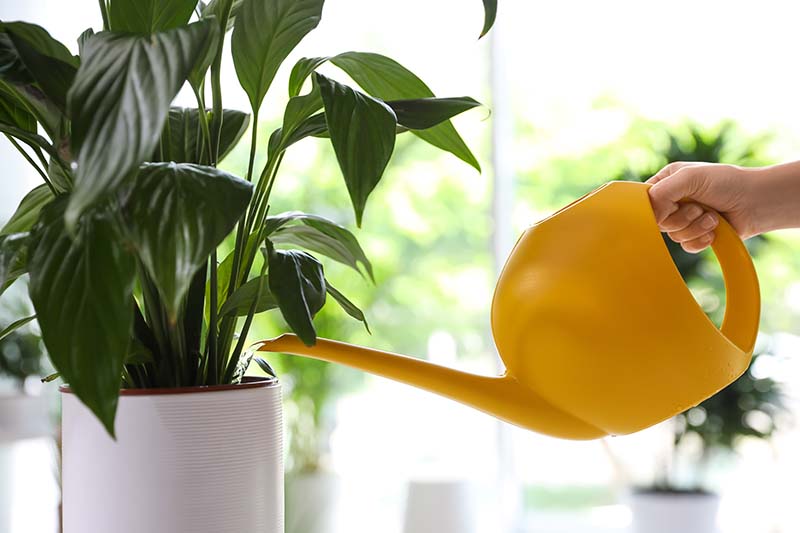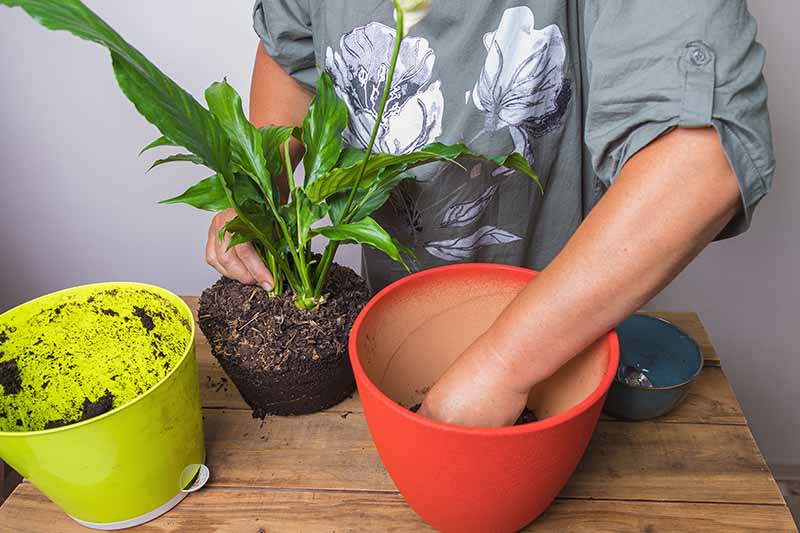Should I cut the brown tips off my peace lily
Peace lilies, known for their stunning white flowers, are also remarkably beautiful houseplants. Their glossy, elegant green leaves are irresistible, even if they don’t bloom. However, the foliage can become less stellar when the tips turn brown, a common occurrence.
This guide discusses various reasons why leaf tips may turn brown, including the most common ones.
Peace lilies are tropical plants native to warm, humid regions of Mexico, South America, and Southeast Asia. They thrive in bright, indirect light, temperatures between 60-85°F, and at least 50% humidity. However, they can survive in extreme temperatures or low humidity levels.
In unfavorable conditions, leaves’ tips may turn brown, but they won’t turn green again. To change the appearance, trim the entire leaf and wait for new foliage, or cut off just the tips, depending on your preference.
The article discusses five key reasons for using brown leaf tips to improve the health of your peace lily.
Why is my peace lily leaves turning brown?
Moisture Stress
A common cause of brown tips on peace lilies is problems with hydration.

Too Much Water
Oversaturated soil hinders plants’ ability to absorb oxygen, as roots absorb it from soil air spaces, causing oversaturation and preventing the roots from breathing.
Oversaturated soil may not be a simple issue to address by reducing watering frequency.
Overwatering a plant can occur due to slow soil drainage or growing in a large container. Peace lilies thrive in slightly root-bound pots, as they can provide enough water without oversaturating the surrounding soil. Large pots hold water and slow to drain, causing roots to sit in soggy soil. Therefore, it’s crucial to provide adequate water for the plant.
The top inch of soil should dry between watering, but this isn’t always a reliable indicator. The soil below the top can remain extremely moist even as it dries out. Use a soil moisture meter to test the bottom half of the pot and add water when it indicates dryness. If maintaining the right moisture level is difficult, consider repotting into a smaller container or using perlite or rice hulls to improve drainage and water retention.
Poor Drainage
Poor drainage in a container can lead to roots sitting in oversaturated soil for longer than they should, despite proper watering.
Many attractive containers lack drainage holes, making it tempting to choose one for your peace lily. However, it’s better to have a container with at least one drainage hole in the bottom or a well-draining container inside a decorative cachepot. Over time, you’ll find it easier to grow houseplants in these containers.

To ensure proper plant growth, remove rocks and loosen soil blocking drainage holes before replacing the plant in the same pot. After watering, empty any catchment at the base of the container.
Too Little Water
Oversaturation can be just as detrimental to your peace lily as too little water.
The plant’s stress can lead to dry, crisp leaf tips, which can be identified by drooping or wilting along with browning tips, indicating a lack of moisture.
Repeated underwatering or dehydration can cause a problem in plants. It’s okay to occasionally underwater, but check the soil’s top inch and add water when it feels dry.
To prevent soil drying out too quickly, consider adding rice hulls or perlite to the potting medium.
A Note on Bottom Watering
Bottom watering is a method to hydrate plants, but it can cause a buildup of sodium in the soil. To flush out excess sodium, water plants from above every fourth or fifth time, as water from above drains through the potting medium.
To prevent soil buildup, soak the soil thoroughly and dump it in the catchment saucer after 10 minutes and 30 minutes if needed. Avoid using softened water and refresh the soil in the container every few years to prevent excess sodium.
Do you know: Why Is my peace lily leaves turning black?
Temperature Extremes
Peace lilies, like all plants, require a specific temperature range to survive and thrive.
Plants thrive in warm, toasty environments, but excessive warmth can cause them to suffer, as they are sensitive to cold temperatures.
The plant may become stressed due to consistent temperatures above 80°F and below 65°F, causing the leaves to turn brown at the tips.
To maintain a healthy plant, move it to a cooler location away from direct sun exposure or increase the AC during heatwaves. Keep plants away from heat vents during winter as the forced air dries out foliage and soil. If temperatures are too cold, increase the heat during winter but avoid relying solely on heat. Move plants away from windows or doorways and avoid leaving them near AC vents in summer.
Lack of Humidity
Peace lilies thrive in warm, humid tropical areas, and without the necessary humidity, their leaves may dry and brown.
To increase humidity in plants, move them to the bathroom for daily showers or group them together. A tray filled with pebbles and water can help maintain green and glossy leaves by evaporating moisture. Regular watering is essential. Alternatively, spray the foliage with a spray bottle once or twice a day, but this is time-consuming. Consider investing in a plant mister for a quick and easy solution. Regular watering and regular top-ups are also recommended for maintaining a healthy plant environment.
The Vivosun pressure sprayer, weighing 27 ounces, allows for multiple plant spraying simultaneously. Purchase it on Amazon, or consider a decorative copper mister from Terrain.
Transform humidifying time into personal recharge time by using headphones, listening to your favorite music, and enjoying the process.
Purchase a humidifier to boost room humidity and skin moisture levels, making it an effective solution for maintaining a healthy environment.
Overfertilizing
Overfertilizing a plant can lead to soil salt buildup, which peace lilies can avoid by watering from the top instead of the bottom. Careful fertilization practices and proper watering from the top can help flush out excess salt from the soil.
To maintain healthy indoor plants, fertilize once a month during spring and summer with an all-purpose indoor plant food like Miracle-Grow Indoor Plant Food. Dilute the fertilizer by half and avoid fertilizing during fall and winter. If too much fertilizer has been applied, remove the plant from its container, remove as much potting medium as possible, and repot in fresh soil in the same or new container.
Sun Scorch
Direct sun exposure can cause peace lily to experience sun scorch, causing the leaves to turn brown and dry.
The brown patches may extend further down the leaf unless the sun exposure is altered.
The problem can be resolved by relocating the plant to a location with less light.
To protect your peace lily from excessive sunlight, consider hanging sheer curtains over your window, especially if your window has northern exposure. Without a curtain or blind, the plant may receive too much sun, negatively impacting its growth.
Return Those Peace Lilies to Their Former Glory
Do you know the 17 incredible peace lily benefits!
Table of the causes and solutions for brown tips on a peace
| Causes | Solutions |
| Low humidity | Mist the leaves regularly, place a tray of water near the plant, or use a humidifier. |
| Over-fertilization | Flush the soil with distilled water to remove excess fertilizer, and adjust your feeding schedule. |
| Under-watering | Water the plant when the top inch of soil is dry, and make sure the pot has good drainage. |
| Over-watering | Allow the soil to dry out before watering again, and ensure proper drainage. |
| Exposure to direct sunlight | Move the plant to a spot with bright, indirect light or filtered sunlight. |
| Exposure to cold drafts | Keep the plant away from windows and doors that may let in cold air. |
| Root rot | Repot the plant in fresh, well-draining soil and trim off any damaged roots. |
| Pests | Treat the plant with an insecticide or insecticidal soap according to the manufacturer’s instructions. |











